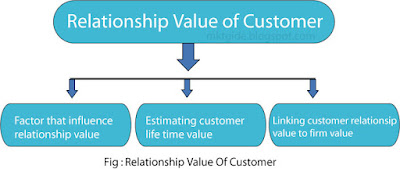What Is Your Digital Marketing Strategy for 2018
Make no mistake; in the modern business world, a huge portion of your marketing is going to be digital.
Consumers are flocking online to find the best deals while businesses continue to migrate over in order to meet their demands. You need to be able to reach those consumers if you have any hope of growing your business.
The problem is that this ever-changing landscape can get quite overwhelming. You already have a lot on your plate just running your business, so when you add in digital marketing, it can really wear on us.
Don’t panic! Here are some steps that you can take to make this much easier.
Develop Your Buyer Profile
This is the first step to creating any marketing strategy, including digital. You have to know who you are marketing to. The best strategies are built around a detailed buyer profile.
This profile will represent your ideal customer. Envision your ideal customer, put yourself in his/her shoes, and then write down exactly who they are. Your buyer profile should include details such as:
•Age: Even if you feel that it’s not important, I still recommend that you envision an age range just so that you can create an image of the ideal customer in your mind. Then find trends associated with that age group.
•Location: Web analytical tools like Google Analytics is a great way to identify the location of your website traffic. In most cases, you will be targeting your current audience. Location-based SEO is extremely powerful.
•Income: First of all, never ask your followers this question directly. Based on your niche, you should be able to research the income level of people who are going to be interested. With that said, this is important when pricing your new product or service.
•Job Title: You can gauge this from your current customer base. It might not even be relevant to your business.
I also recommend that you set up some surveys and questionnaires for social media. You can also include a post that asks a question and asks for a response in the comments.
Identify Your Goals
Your marketing goals need to be tied into your business goals. So, if you have a business goal of boosting revenue by 20%, then your digital marketing goal might be to improve your online lead generation by 50%. Whatever your goal might be, just remember that it should follow the SMART formula. The SMART formula states that a goal must be:
•Specific
•Measurable
•Attainable
•Realistic
•Timely
Specific and measurable are probably the two most important parts of a goal. It must be specific. Vague goals are not going to work.
If you noticed, we used a real number in our example above. Saying “I want to improve my online lead generation by 50%.” is much better than just saying “I want to improve my online lead generation.”
Goals must also be measurable. Otherwise, you have no way of knowing whether or not you are achieving them.
Choose Your Digital Marketing Channels
Once you have defined your target audience and set SMART goals, it’s time to choose the marketing channels that you’ll use to push your business.
Let’s look at the three main categories that you will have to choose from:
•Owned Media: These are channels that your business owns. Some examples include social media profiles, blogs, images, logos, and websites. You should always start by making sure these align with your marketing goals.
•Earned Media: Earned media is exposure that you have earned. Some examples are word of mouth advertising and customer experience. One of your goals should be to earn more exposure through customer reviews and having people share content through social media.
•Paid Media: Paid media is any form of advertising that you pay for. In most campaigns, you will use your paid media to funnel prospects to your owned media.
Gather all of your marketing material and organize it into a spreadsheet so that you can easily keep track of it.
Personalize Customers’ Digital Experience
In marketing, personalization wins big so customized emails are 26% more likely to be opened. The problem is that there are a lot of ways to make this work.
Some experts make customization sound much more complicated than it really is. What’s important is that you collect the right information right away. The rest is actually quite easy.
The truth is that so many marketers miss out on the powerful benefits of personalization because they have already started collecting email addresses but did not get all of the required information. However, it’s never too late to start.
• Create a plan and get your entire team on-board with your new strategy.
• Make sure the right fields are on your sign-up forms.
• Segment your lists (consider geography, gender, age, job title, company size, transactional data etc.)
• Start sending emails with personalized subject lines.
Use Chatbots to Engage Your Audience
The marketing world is in a constant state of flux. Today, we are starting to see a brand new trend that has gained a lot of popularity – known as Chat bots.
As companies continue to battle for customer support and retention, we see new, innovative methods of automation being brought to life.
Here are some of the reasons why you should include Chat bots as part of your digital marketing strategy:
• Mobile Optimization: Chat bots are designed with the mobile-first approach in mind so you won’t have to worry about having to jump through hoops to have them adapted to mobile devices.
• Consistent Social Media Marketing: By integrating Chat bots across your social media platforms, you will be able to keep all of your various social media campaigns updated consistently.
• Real-Time Updates: Chat bots are still in their earlier stages in development so they are going to see constant improvement over the next several years. That means you can expect real-time analysis and quick updates.
One of the most important benefits of digital marketing is that once you have developed a campaign, you can automate a large portion of it. So if you’re not automating, then you’re going to be several steps behind the competition.
Finally, developing a strategy will put you ahead of your competition. Did you know that 46% of businesses do not have a well-defined marketing strategy?
Don’t be a statistic. Be a success story! Without a plan, you cannot expect to grow and reach the next level.


































